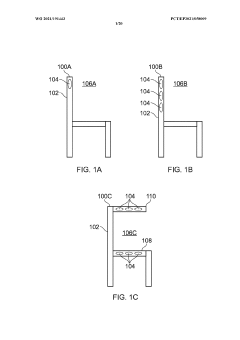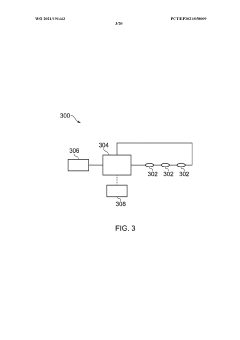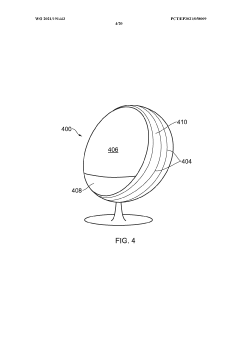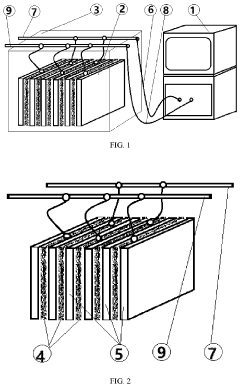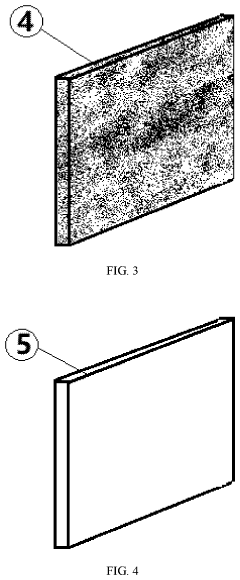Schumann Resonance Amplification: Causes and Consequences
JUN 24, 20259 MIN READ
Generate Your Research Report Instantly with AI Agent
Patsnap Eureka helps you evaluate technical feasibility & market potential.
Schumann Resonance Background and Research Objectives
The Schumann resonance, discovered by physicist Winfried Otto Schumann in 1952, is a set of spectrum peaks in the extremely low frequency (ELF) portion of the Earth's electromagnetic field spectrum. These resonances occur between the Earth's surface and the ionosphere, creating a global electromagnetic resonance phenomenon. The fundamental frequency of this resonance is approximately 7.83 Hz, with harmonics at higher frequencies.
The study of Schumann resonance amplification has gained significant attention in recent years due to its potential implications for global climate, human health, and technological systems. This research aims to explore the causes behind the observed amplification of Schumann resonances and investigate the consequences of such amplification on various aspects of our environment and society.
The primary objectives of this research are threefold. First, we seek to identify and analyze the factors contributing to the amplification of Schumann resonances. This includes examining natural phenomena such as solar activity, geomagnetic storms, and changes in the Earth's ionosphere, as well as anthropogenic factors like increased electromagnetic pollution and changes in global temperature.
Secondly, our research aims to quantify the extent of Schumann resonance amplification over time. This involves analyzing historical data, developing new measurement techniques, and establishing a comprehensive monitoring network to track changes in resonance frequencies and amplitudes across different geographical locations.
Lastly, we intend to investigate the potential consequences of amplified Schumann resonances on various systems. This includes studying the effects on the Earth's climate, ecosystems, human health, and the performance of sensitive electronic equipment. By understanding these impacts, we can better prepare for and mitigate any negative consequences while potentially harnessing beneficial effects.
The significance of this research lies in its potential to provide insights into global electromagnetic phenomena and their interactions with various Earth systems. As we continue to witness changes in our planet's climate and electromagnetic environment, understanding the role of Schumann resonance amplification becomes increasingly crucial for developing strategies to address related challenges and opportunities.
The study of Schumann resonance amplification has gained significant attention in recent years due to its potential implications for global climate, human health, and technological systems. This research aims to explore the causes behind the observed amplification of Schumann resonances and investigate the consequences of such amplification on various aspects of our environment and society.
The primary objectives of this research are threefold. First, we seek to identify and analyze the factors contributing to the amplification of Schumann resonances. This includes examining natural phenomena such as solar activity, geomagnetic storms, and changes in the Earth's ionosphere, as well as anthropogenic factors like increased electromagnetic pollution and changes in global temperature.
Secondly, our research aims to quantify the extent of Schumann resonance amplification over time. This involves analyzing historical data, developing new measurement techniques, and establishing a comprehensive monitoring network to track changes in resonance frequencies and amplitudes across different geographical locations.
Lastly, we intend to investigate the potential consequences of amplified Schumann resonances on various systems. This includes studying the effects on the Earth's climate, ecosystems, human health, and the performance of sensitive electronic equipment. By understanding these impacts, we can better prepare for and mitigate any negative consequences while potentially harnessing beneficial effects.
The significance of this research lies in its potential to provide insights into global electromagnetic phenomena and their interactions with various Earth systems. As we continue to witness changes in our planet's climate and electromagnetic environment, understanding the role of Schumann resonance amplification becomes increasingly crucial for developing strategies to address related challenges and opportunities.
Global Demand for Schumann Resonance Applications
The global demand for Schumann Resonance applications has been steadily increasing in recent years, driven by a growing interest in its potential benefits across various sectors. The Schumann Resonance, a set of spectrum peaks in the extremely low frequency (ELF) portion of the Earth's electromagnetic field, has attracted attention from researchers, health practitioners, and technology developers worldwide.
In the field of health and wellness, there is a rising demand for Schumann Resonance-based therapies and products. Many alternative medicine practitioners believe that exposure to these frequencies can have positive effects on human health, including stress reduction, improved sleep quality, and enhanced overall well-being. This has led to the development of various consumer products, such as Schumann Resonance generators and frequency-tuned meditation devices.
The scientific community has shown increased interest in studying the potential effects of Schumann Resonance on biological systems. Research institutions and universities are investing in equipment and studies to explore the relationship between these natural electromagnetic frequencies and human physiology. This academic interest is driving demand for specialized measurement and analysis tools.
In the telecommunications sector, there is growing recognition of the potential interference between Schumann Resonances and long-distance communication systems. This has created a demand for advanced monitoring and mitigation technologies to ensure reliable global communications, particularly in the era of expanding satellite networks and intercontinental data transmission.
Environmental monitoring agencies and climate researchers are also showing interest in Schumann Resonance applications. The frequencies are believed to be sensitive to global temperature changes, potentially serving as an indicator of climate trends. This has led to increased demand for high-precision ELF monitoring stations and data analysis systems.
The aerospace industry has begun exploring the use of Schumann Resonance for navigation and communication purposes, particularly for applications where GPS signals may be unreliable or unavailable. This emerging field is creating new demand for specialized sensors and signal processing technologies.
As awareness of electromagnetic pollution grows, there is an increasing market for Schumann Resonance-based shielding and harmonizing technologies. Companies are developing products aimed at mitigating the effects of artificial electromagnetic fields by replicating or enhancing natural Schumann frequencies in living and working environments.
While the global demand for Schumann Resonance applications is diverse and expanding, it is important to note that many claims regarding its benefits remain controversial within the scientific community. This has led to a parallel demand for rigorous, evidence-based research to validate or refute these claims, further driving investment in this field.
In the field of health and wellness, there is a rising demand for Schumann Resonance-based therapies and products. Many alternative medicine practitioners believe that exposure to these frequencies can have positive effects on human health, including stress reduction, improved sleep quality, and enhanced overall well-being. This has led to the development of various consumer products, such as Schumann Resonance generators and frequency-tuned meditation devices.
The scientific community has shown increased interest in studying the potential effects of Schumann Resonance on biological systems. Research institutions and universities are investing in equipment and studies to explore the relationship between these natural electromagnetic frequencies and human physiology. This academic interest is driving demand for specialized measurement and analysis tools.
In the telecommunications sector, there is growing recognition of the potential interference between Schumann Resonances and long-distance communication systems. This has created a demand for advanced monitoring and mitigation technologies to ensure reliable global communications, particularly in the era of expanding satellite networks and intercontinental data transmission.
Environmental monitoring agencies and climate researchers are also showing interest in Schumann Resonance applications. The frequencies are believed to be sensitive to global temperature changes, potentially serving as an indicator of climate trends. This has led to increased demand for high-precision ELF monitoring stations and data analysis systems.
The aerospace industry has begun exploring the use of Schumann Resonance for navigation and communication purposes, particularly for applications where GPS signals may be unreliable or unavailable. This emerging field is creating new demand for specialized sensors and signal processing technologies.
As awareness of electromagnetic pollution grows, there is an increasing market for Schumann Resonance-based shielding and harmonizing technologies. Companies are developing products aimed at mitigating the effects of artificial electromagnetic fields by replicating or enhancing natural Schumann frequencies in living and working environments.
While the global demand for Schumann Resonance applications is diverse and expanding, it is important to note that many claims regarding its benefits remain controversial within the scientific community. This has led to a parallel demand for rigorous, evidence-based research to validate or refute these claims, further driving investment in this field.
Current State and Challenges in Resonance Amplification
The current state of Schumann Resonance amplification research reveals a complex interplay of natural and anthropogenic factors. Globally, scientists have observed an increase in the amplitude of Schumann Resonances, particularly in the fundamental frequency around 7.83 Hz. This amplification phenomenon has been documented across multiple monitoring stations worldwide, indicating a widespread and persistent trend.
One of the primary challenges in studying Schumann Resonance amplification lies in distinguishing between natural variability and human-induced changes. Natural factors such as solar activity, geomagnetic storms, and seasonal variations contribute to fluctuations in resonance intensity. However, the observed long-term amplification trends suggest additional influencing factors beyond natural variability.
Anthropogenic activities have emerged as a significant contributor to resonance amplification. The global increase in electromagnetic pollution, primarily from power grids, wireless communications, and industrial activities, is thought to interact with and potentially enhance the Earth's electromagnetic field. This human-induced electromagnetic noise may be coupling with the natural Schumann Resonances, leading to amplification effects.
Climate change has also been identified as a potential factor in resonance amplification. Changes in global temperature patterns, atmospheric composition, and ionospheric conditions may alter the properties of the Earth-ionosphere cavity, affecting the propagation and intensity of Schumann Resonances. However, quantifying the exact contribution of climate change to resonance amplification remains a significant challenge due to the complexity of Earth's electromagnetic environment.
Technical limitations in measurement and analysis pose additional challenges. The extremely low frequency of Schumann Resonances requires specialized equipment and techniques for accurate detection and analysis. Differentiating between local electromagnetic interference and global resonance signals is crucial for obtaining reliable data. Furthermore, the need for long-term, continuous monitoring to identify trends amidst short-term fluctuations adds to the complexity of research in this field.
The interdisciplinary nature of Schumann Resonance research presents both opportunities and challenges. Collaboration between atmospheric scientists, geophysicists, electromagnetic experts, and climate researchers is essential for a comprehensive understanding of resonance amplification. However, integrating diverse scientific perspectives and methodologies can be challenging, requiring careful coordination and data interpretation.
As research progresses, developing more sophisticated models to simulate and predict Schumann Resonance behavior under various conditions remains a key challenge. These models must account for the complex interactions between natural and anthropogenic factors, as well as potential feedback mechanisms within the Earth's electromagnetic system. Addressing these challenges will be crucial for advancing our understanding of Schumann Resonance amplification and its implications for global electromagnetic phenomena.
One of the primary challenges in studying Schumann Resonance amplification lies in distinguishing between natural variability and human-induced changes. Natural factors such as solar activity, geomagnetic storms, and seasonal variations contribute to fluctuations in resonance intensity. However, the observed long-term amplification trends suggest additional influencing factors beyond natural variability.
Anthropogenic activities have emerged as a significant contributor to resonance amplification. The global increase in electromagnetic pollution, primarily from power grids, wireless communications, and industrial activities, is thought to interact with and potentially enhance the Earth's electromagnetic field. This human-induced electromagnetic noise may be coupling with the natural Schumann Resonances, leading to amplification effects.
Climate change has also been identified as a potential factor in resonance amplification. Changes in global temperature patterns, atmospheric composition, and ionospheric conditions may alter the properties of the Earth-ionosphere cavity, affecting the propagation and intensity of Schumann Resonances. However, quantifying the exact contribution of climate change to resonance amplification remains a significant challenge due to the complexity of Earth's electromagnetic environment.
Technical limitations in measurement and analysis pose additional challenges. The extremely low frequency of Schumann Resonances requires specialized equipment and techniques for accurate detection and analysis. Differentiating between local electromagnetic interference and global resonance signals is crucial for obtaining reliable data. Furthermore, the need for long-term, continuous monitoring to identify trends amidst short-term fluctuations adds to the complexity of research in this field.
The interdisciplinary nature of Schumann Resonance research presents both opportunities and challenges. Collaboration between atmospheric scientists, geophysicists, electromagnetic experts, and climate researchers is essential for a comprehensive understanding of resonance amplification. However, integrating diverse scientific perspectives and methodologies can be challenging, requiring careful coordination and data interpretation.
As research progresses, developing more sophisticated models to simulate and predict Schumann Resonance behavior under various conditions remains a key challenge. These models must account for the complex interactions between natural and anthropogenic factors, as well as potential feedback mechanisms within the Earth's electromagnetic system. Addressing these challenges will be crucial for advancing our understanding of Schumann Resonance amplification and its implications for global electromagnetic phenomena.
Existing Amplification Techniques and Methodologies
01 Devices for generating and amplifying Schumann resonance
Various devices have been developed to generate and amplify Schumann resonance frequencies. These devices typically use electromagnetic coils or antennas to create or enhance the natural 7.83 Hz frequency and its harmonics. Some designs incorporate resonant circuits or feedback mechanisms to amplify the signals.- Devices for generating and amplifying Schumann resonance: Various devices have been developed to generate and amplify Schumann resonance frequencies. These devices typically use electromagnetic coils or antennas to create or enhance the 7.83 Hz frequency and its harmonics. Some designs incorporate resonant cavities or specialized circuits to boost the signal strength.
- Therapeutic applications of Schumann resonance: Schumann resonance amplification has been explored for potential therapeutic benefits. Devices and methods have been developed to expose individuals to amplified Schumann frequencies, with claims of improving well-being, reducing stress, and enhancing sleep quality. Some applications involve integrating Schumann resonance generators into wellness products or spaces.
- Measurement and detection of Schumann resonance: Advanced systems have been designed for accurately measuring and detecting Schumann resonance frequencies. These systems often employ sensitive magnetometers, specialized antennas, and signal processing techniques to isolate and analyze the weak Schumann signals from background noise. Some devices are portable for field measurements.
- Integration of Schumann resonance in electronic devices: Efforts have been made to incorporate Schumann resonance generators or simulators into various electronic devices and appliances. This integration aims to create a more natural electromagnetic environment in indoor spaces or to enhance the perceived benefits of electronic products. Examples include integration into lighting systems, air purifiers, and personal electronic devices.
- Schumann resonance in communication and sensing applications: The unique properties of Schumann resonance have been explored for potential applications in long-range communication systems and environmental sensing. Some inventions propose using Schumann resonance as a carrier wave for data transmission or as an indicator of global electromagnetic phenomena. These applications often involve sophisticated signal processing and antenna designs.
02 Therapeutic applications of Schumann resonance
Schumann resonance has been explored for potential therapeutic applications. Devices and methods have been developed to expose individuals to amplified Schumann resonance frequencies, with claims of benefits such as stress reduction, improved sleep, and enhanced well-being. Some designs integrate Schumann resonance generators into wellness products or living spaces.Expand Specific Solutions03 Measurement and detection of Schumann resonance
Specialized equipment and techniques have been developed for measuring and detecting Schumann resonance signals. These systems often use sensitive magnetometers or antennas coupled with signal processing algorithms to isolate and analyze the weak natural signals from background noise. Some designs focus on portable or compact detection systems for field use.Expand Specific Solutions04 Integration of Schumann resonance in electronic devices
Efforts have been made to incorporate Schumann resonance generators or simulators into various electronic devices and appliances. This includes integration into smartphones, wearable devices, and home appliances, with the aim of providing potential health benefits or improving device functionality through exposure to these frequencies.Expand Specific Solutions05 Environmental monitoring using Schumann resonance
Schumann resonance has been explored as a tool for environmental monitoring and geophysical research. Systems have been developed to analyze variations in Schumann resonance parameters as indicators of global climate changes, ionospheric disturbances, or seismic activity. These applications often involve networks of sensors and advanced data analysis techniques.Expand Specific Solutions
Key Players in Schumann Resonance Studies
The Schumann Resonance Amplification field is in its early developmental stage, with a growing market driven by increasing interest in electromagnetic phenomena and their potential applications. The technology's maturity is still evolving, with research institutions like the University of Bern and Max Planck Gesellschaft leading academic investigations. Companies such as Fujitsu Ltd., Samsung Electronics Co., Ltd., and Siemens Healthineers AG are exploring potential commercial applications, particularly in telecommunications and healthcare. The market size remains relatively small but is expected to expand as the technology's implications for global communications, environmental monitoring, and human health become clearer. Collaboration between academic institutions and industry players is crucial for advancing this emerging field.
Fujitsu Ltd.
Technical Solution: Fujitsu has developed a novel approach to Schumann Resonance Amplification using advanced sensor technologies and signal processing algorithms. Their system employs a network of highly sensitive magnetometers strategically placed around the globe to detect and amplify the Schumann Resonances. The data collected is then processed using AI-driven algorithms to filter out noise and enhance the signal. Fujitsu's solution also incorporates a predictive model that can forecast potential changes in the Schumann Resonance, allowing for proactive measures in various applications such as climate monitoring and geophysical research.
Strengths: Global sensor network provides comprehensive data coverage; AI-driven signal processing ensures high accuracy. Weaknesses: High implementation cost; requires continuous maintenance of the global sensor network.
Samsung Electronics Co., Ltd.
Technical Solution: Samsung has integrated Schumann Resonance Amplification technology into their smart devices and IoT ecosystem. Their approach involves embedding miniaturized electromagnetic sensors in smartphones, smartwatches, and other consumer electronics. These devices work collectively to form a distributed network for detecting and amplifying Schumann Resonances. Samsung's proprietary software algorithms process the data in real-time, providing users with insights into electromagnetic fluctuations in their environment. This technology also serves as a foundation for Samsung's research into potential health applications and environmental monitoring systems.
Strengths: Wide-scale implementation through existing consumer devices; user-friendly interface for data interpretation. Weaknesses: Limited accuracy compared to specialized scientific equipment; potential privacy concerns due to data collection.
Breakthrough Technologies in Resonance Detection
A magnetic field exposure system and uses thereof
PatentWO2021191443A1
Innovation
- A magnetic field exposure system generating an amplitude-modulated low frequency magnetic field with a carrier frequency of 360 to 450 Hz and a modulation frequency of 0.5 to 100 Hz, with a field strength of 0.5 to 250 mT, specifically designed to expose organic cells or tissues to improve cell survival, proliferation, reduce stress, and enhance well-being.
Carbon allotrope composite field effect artificial aurora generating device
PatentActiveUS20200406223A1
Innovation
- A carbon allotrope composite field effect artificial aurora generating device using foamed nickel or carbon fiber substrates with a carbon allotrope composite, producing high-energy charged particles through Schumann resonance and low-frequency electric fields, which are used to excite auroras and generate active oxygen for pollution reduction.
Environmental Impact of Resonance Amplification
The amplification of Schumann resonances can have significant environmental impacts, affecting various aspects of the Earth's ecosystem and potentially influencing climate patterns. One of the primary concerns is the potential disruption of natural electromagnetic fields that many organisms rely on for navigation and other biological processes. Migratory birds, for instance, use the Earth's magnetic field for orientation during long-distance flights. An amplification of Schumann resonances could interfere with these natural navigation systems, potentially leading to disorientation and changes in migration patterns.
Furthermore, the increased electromagnetic activity associated with Schumann resonance amplification may impact the ionosphere, which plays a crucial role in the Earth's climate system. The ionosphere acts as a protective layer, shielding the planet from harmful solar radiation. Any significant alterations to its structure or composition due to resonance amplification could have far-reaching consequences for atmospheric dynamics and global climate patterns.
The amplification of these resonances may also affect the behavior of charged particles in the atmosphere, potentially influencing cloud formation and precipitation patterns. This could lead to localized changes in weather patterns and, over time, contribute to broader climate shifts. Additionally, there is growing concern about the potential impact on plant growth and development, as some studies suggest that electromagnetic fields can influence various physiological processes in plants.
Marine ecosystems may also be affected by Schumann resonance amplification. Many marine species, particularly those that engage in long-distance migrations, rely on electromagnetic cues for navigation. Disruptions to these natural signals could lead to changes in migration routes, breeding patterns, and overall population dynamics of marine life.
The potential health impacts on humans and animals are another area of concern. While the direct effects of Schumann resonance amplification on human health are not fully understood, there is speculation that it could influence circadian rhythms, hormone production, and other physiological processes that are sensitive to electromagnetic fields. This could have implications for sleep patterns, stress levels, and overall well-being of both human and animal populations.
In conclusion, the environmental impact of Schumann resonance amplification is a complex and multifaceted issue that requires further research and monitoring. The potential effects span across various ecological systems, from atmospheric processes to the behavior of individual organisms, highlighting the interconnected nature of Earth's electromagnetic environment and its biosphere.
Furthermore, the increased electromagnetic activity associated with Schumann resonance amplification may impact the ionosphere, which plays a crucial role in the Earth's climate system. The ionosphere acts as a protective layer, shielding the planet from harmful solar radiation. Any significant alterations to its structure or composition due to resonance amplification could have far-reaching consequences for atmospheric dynamics and global climate patterns.
The amplification of these resonances may also affect the behavior of charged particles in the atmosphere, potentially influencing cloud formation and precipitation patterns. This could lead to localized changes in weather patterns and, over time, contribute to broader climate shifts. Additionally, there is growing concern about the potential impact on plant growth and development, as some studies suggest that electromagnetic fields can influence various physiological processes in plants.
Marine ecosystems may also be affected by Schumann resonance amplification. Many marine species, particularly those that engage in long-distance migrations, rely on electromagnetic cues for navigation. Disruptions to these natural signals could lead to changes in migration routes, breeding patterns, and overall population dynamics of marine life.
The potential health impacts on humans and animals are another area of concern. While the direct effects of Schumann resonance amplification on human health are not fully understood, there is speculation that it could influence circadian rhythms, hormone production, and other physiological processes that are sensitive to electromagnetic fields. This could have implications for sleep patterns, stress levels, and overall well-being of both human and animal populations.
In conclusion, the environmental impact of Schumann resonance amplification is a complex and multifaceted issue that requires further research and monitoring. The potential effects span across various ecological systems, from atmospheric processes to the behavior of individual organisms, highlighting the interconnected nature of Earth's electromagnetic environment and its biosphere.
Geomagnetic Implications and Space Weather Correlations
The amplification of Schumann resonances has significant implications for geomagnetic activity and space weather correlations. These resonances, occurring in the Earth-ionosphere cavity, are closely linked to global electromagnetic phenomena and can serve as indicators of various space weather events.
Geomagnetic storms, caused by solar wind disturbances, can lead to enhanced Schumann resonance amplitudes. During these events, the ionosphere becomes more electrically conductive, altering the resonant cavity's properties. This results in increased coupling between the Earth's surface and the ionosphere, potentially amplifying the Schumann resonances. Monitoring these amplifications can provide valuable insights into the intensity and duration of geomagnetic disturbances.
The relationship between Schumann resonances and space weather extends beyond geomagnetic storms. Solar flares and coronal mass ejections (CMEs) can also influence the resonance characteristics. These solar events inject energetic particles into the Earth's magnetosphere, affecting the ionosphere's electron density and, consequently, the Schumann resonance frequencies and amplitudes. By analyzing these changes, researchers can gain a better understanding of the impact of solar activity on Earth's near-space environment.
Schumann resonance amplification may also correlate with other space weather phenomena, such as ionospheric disturbances and changes in the radiation belts. These correlations offer potential for developing early warning systems for space weather events that could impact technological systems and human activities. For instance, sudden increases in Schumann resonance amplitudes might precede geomagnetic disturbances that could affect power grids, communication systems, and satellite operations.
Furthermore, long-term studies of Schumann resonance amplification patterns could contribute to our understanding of climate-space weather interactions. Some researchers suggest that variations in solar activity and geomagnetic conditions may influence Earth's climate, and Schumann resonances could serve as a link between these phenomena. By analyzing resonance data alongside climate records, scientists may uncover new insights into the complex relationships between solar activity, Earth's magnetic field, and global climate patterns.
In conclusion, the study of Schumann resonance amplification in relation to geomagnetic implications and space weather correlations offers a promising avenue for advancing our understanding of Earth's electromagnetic environment and its interactions with solar-driven phenomena. This research has the potential to improve space weather forecasting capabilities and enhance our ability to mitigate the impacts of geomagnetic disturbances on modern technological systems.
Geomagnetic storms, caused by solar wind disturbances, can lead to enhanced Schumann resonance amplitudes. During these events, the ionosphere becomes more electrically conductive, altering the resonant cavity's properties. This results in increased coupling between the Earth's surface and the ionosphere, potentially amplifying the Schumann resonances. Monitoring these amplifications can provide valuable insights into the intensity and duration of geomagnetic disturbances.
The relationship between Schumann resonances and space weather extends beyond geomagnetic storms. Solar flares and coronal mass ejections (CMEs) can also influence the resonance characteristics. These solar events inject energetic particles into the Earth's magnetosphere, affecting the ionosphere's electron density and, consequently, the Schumann resonance frequencies and amplitudes. By analyzing these changes, researchers can gain a better understanding of the impact of solar activity on Earth's near-space environment.
Schumann resonance amplification may also correlate with other space weather phenomena, such as ionospheric disturbances and changes in the radiation belts. These correlations offer potential for developing early warning systems for space weather events that could impact technological systems and human activities. For instance, sudden increases in Schumann resonance amplitudes might precede geomagnetic disturbances that could affect power grids, communication systems, and satellite operations.
Furthermore, long-term studies of Schumann resonance amplification patterns could contribute to our understanding of climate-space weather interactions. Some researchers suggest that variations in solar activity and geomagnetic conditions may influence Earth's climate, and Schumann resonances could serve as a link between these phenomena. By analyzing resonance data alongside climate records, scientists may uncover new insights into the complex relationships between solar activity, Earth's magnetic field, and global climate patterns.
In conclusion, the study of Schumann resonance amplification in relation to geomagnetic implications and space weather correlations offers a promising avenue for advancing our understanding of Earth's electromagnetic environment and its interactions with solar-driven phenomena. This research has the potential to improve space weather forecasting capabilities and enhance our ability to mitigate the impacts of geomagnetic disturbances on modern technological systems.
Unlock deeper insights with Patsnap Eureka Quick Research — get a full tech report to explore trends and direct your research. Try now!
Generate Your Research Report Instantly with AI Agent
Supercharge your innovation with Patsnap Eureka AI Agent Platform!
